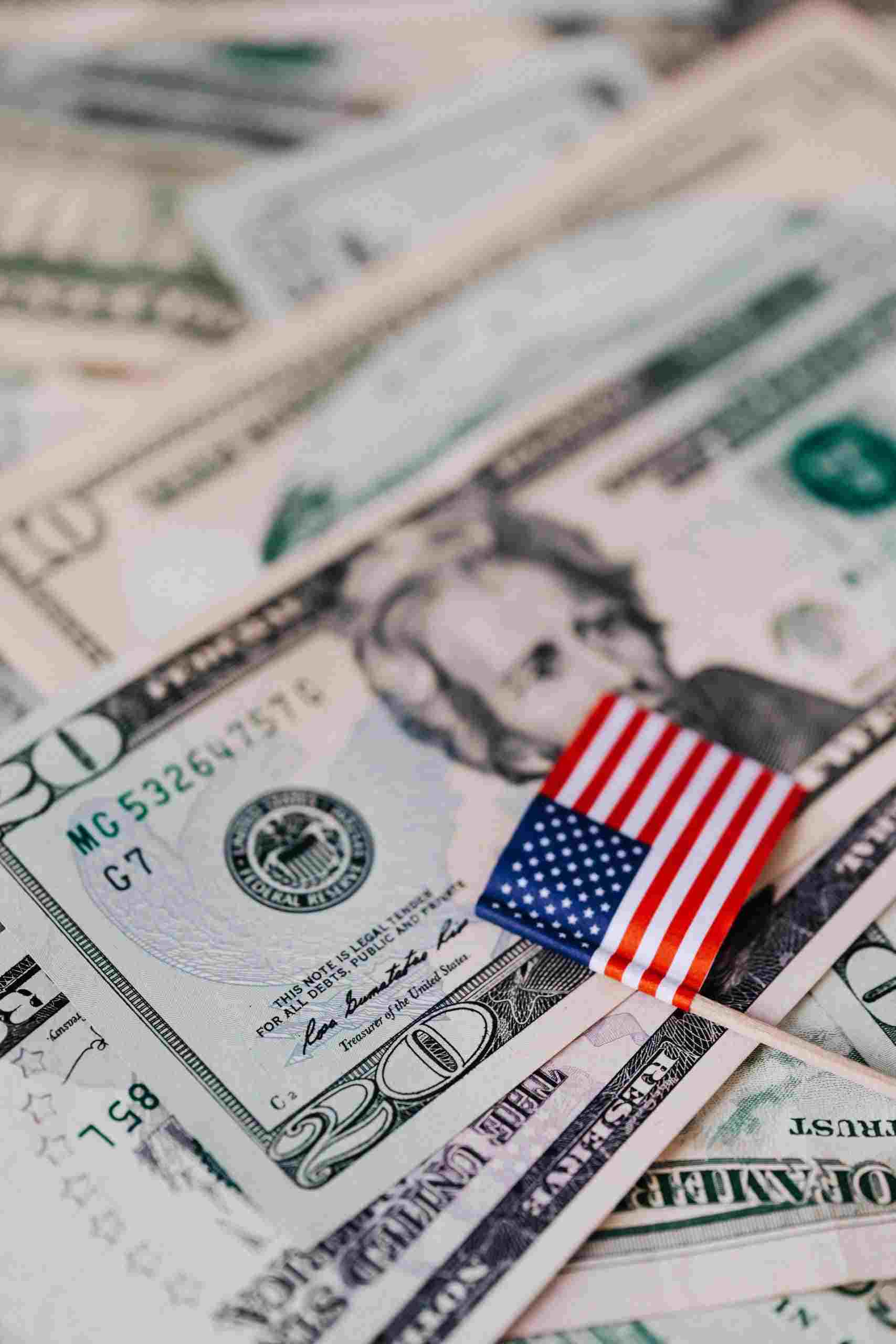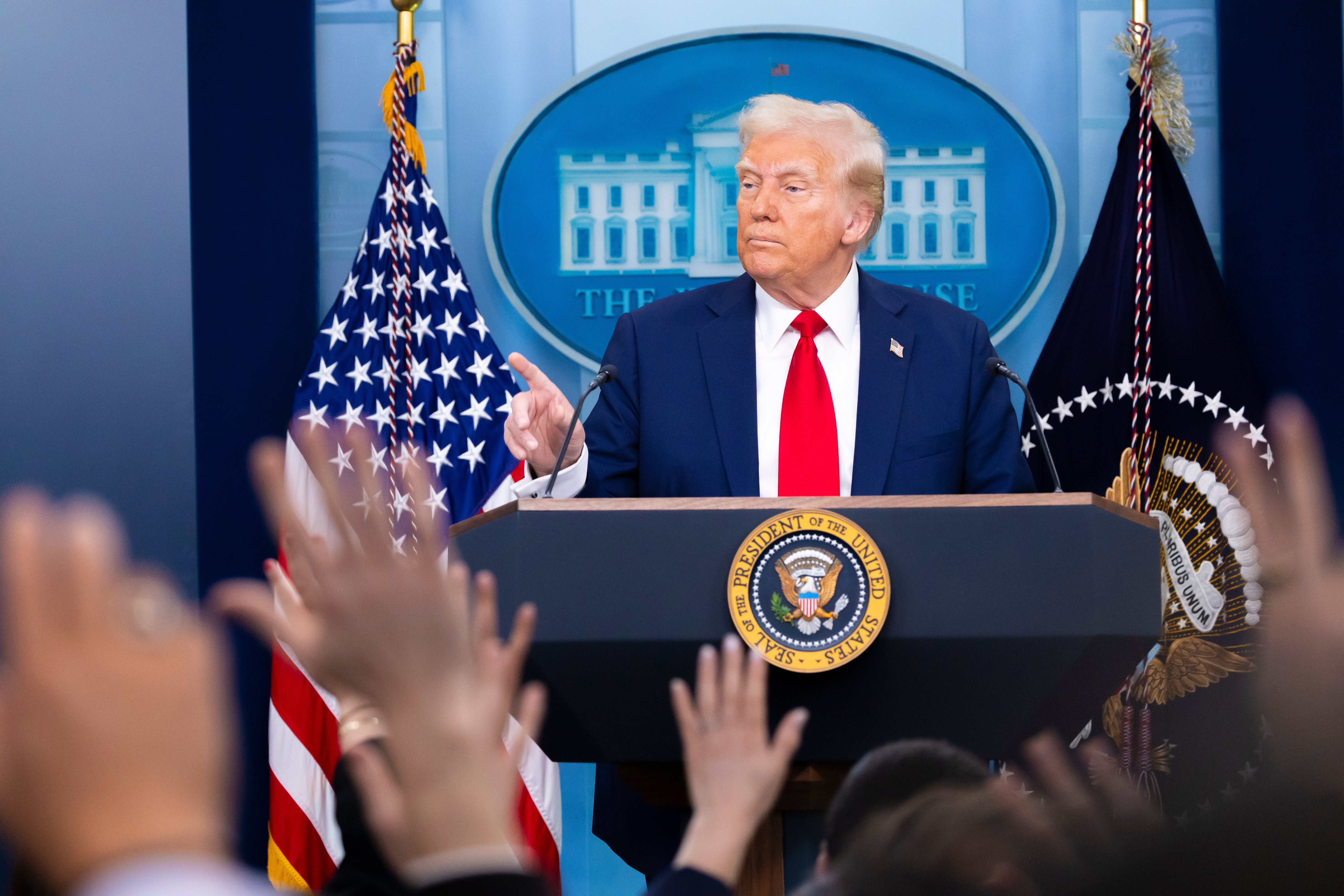Written by Nadia Innab
With control of the House and majority in the Senate at stake, spending for the 2022 general election began well before the end of primary season. All 435 House seats, 35 Senate seats, 36 gubernatorial positions, and many state and local positions are on the ballot in this year’s midterms. Overall, we have seen $958M in pre-booked spending between August 1 and November 8 for general elections, allowing for a deep dive spending analysis into the breakdown of the money, ahead of election day.
We recorded spending across broadcast, cable, radio, satellite, and digital media types and of the total money spent, Democrats have spent $535M and Republicans have spent $423M. Issue groups have spent at a greater rate than candidates, with PACs outspending candidate campaigns $827M to $131M.
With fewer than 20 primaries remaining, we have recorded $1.6B in primary spending thus far. Spending recorded in primaries has not always been an indicator of how much spending each respective general election has recorded. For example, the Georgia Senate race has seen $148M in spending towards the general but saw less than a quarter of that in the primary. In Arizona, however, the primary has seen $18M more than the general up to this point. The general election that has seen the highest pre-book spending reserved so far is Georgia Senate, while other Senate races around the country make up the rest of the top six.

We have recorded spending for the fall across 34 states and 117 markets. Four states have seen over $100M in pre-bookings: Nevada ($155M), Georgia ($118M), Arizona ($113M), and Pennsylvania ($113M). We have seen the most money in the Las Vegas (132M), Phoenix ($94M), and Atlanta ($75M) markets. Of the top ten states with the most spending, six are hosting both Senate and Governor races. Each of the states in the top ten are hosting either a Senate or a Governor’s race.
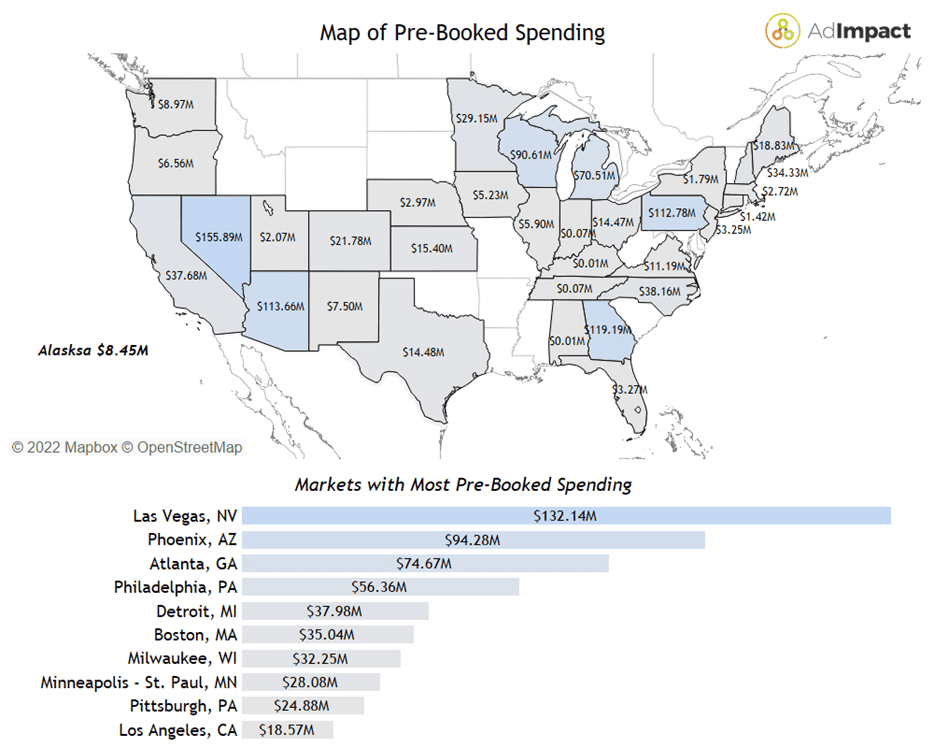
Ninety-seven percent of the total $958M in pre-booked spending is reserved in Senate ($453M), House ($300M), and Gubernatorial ($175M) races. Senate races have pooled in almost half of the total pre-booked money seen this year, likely due to the Senate’s current 50-50 split. While Vice President Kamala Harris holds the tie-breaking vote to give the Democrats a 51-50 lead in the Senate, this year’s midterms could sway the Senate in either direction.

Democrats have the lead in spending each month from August through November, except in September when Republican reservations outpace them $131M to $103M. Over half of the pre-booked money is scheduled for October, and there is $140M booked between November 1 and election day (November 8).
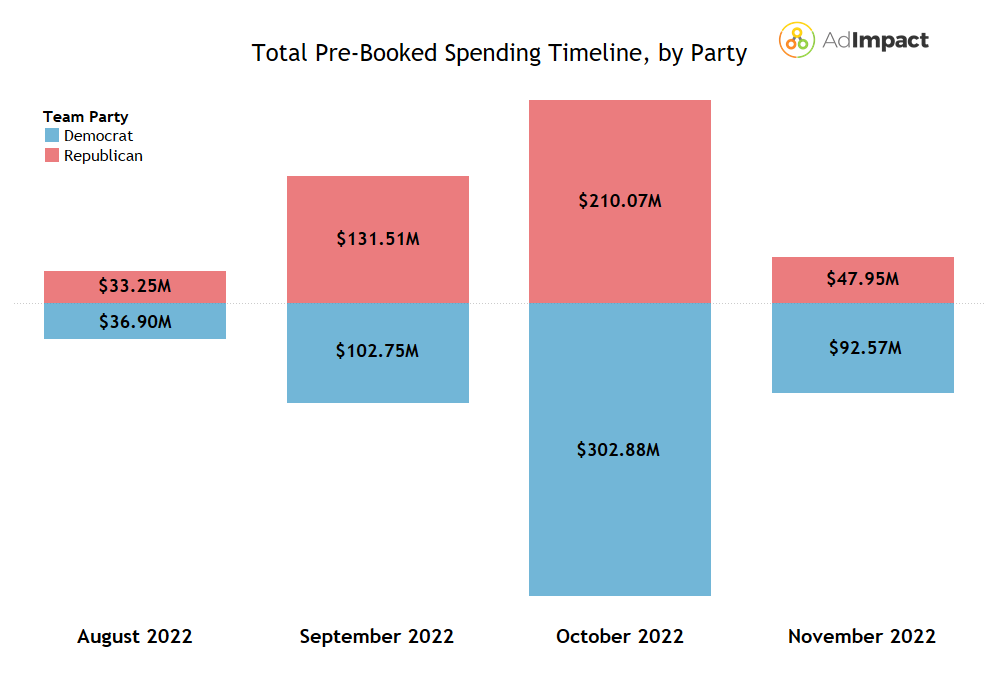
Candidate campaigns have pre-booked $131M between August 1 and November 8. Notably, Democrat candidates outspent Republican candidates $118M to $13M. Only two GOP candidates have spent in the top 20 candidates for the general election. In the race for Nevada Senate, Adam Laxalt (R) has pre-booked $6.4M across media types. His competition, Catherine Cortez-Masto (D) has pre-booked $8.7M. The Cook Political Report lists NV Senate as a toss-up, making this one of the states that could sway control of the Senate. Ron DeSantis is the next highest GOP candidate spender, with $1.9M going towards his gubernatorial campaign in Florida. Florida’s primary election is scheduled for August 23, but the incumbent DeSantis has already advanced to the general election.
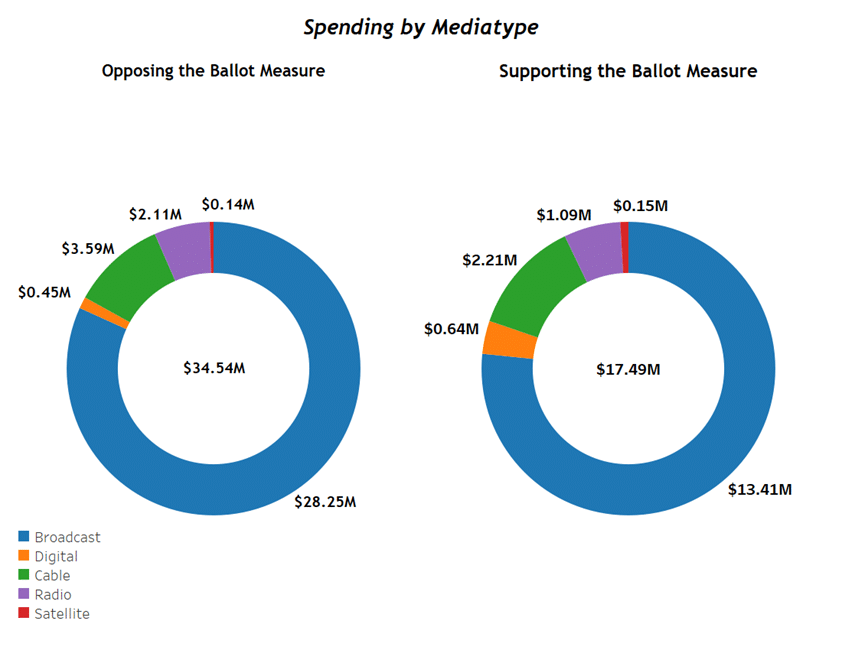
Georgia incumbent Senator Raphael Warnock (D) has spent more money than all GOP candidates combined for the general election thus far. Warnock, who won during the 2021 special runoff election, has spent over $22M between August 1 and November 8. His opponent, Herschel Walker (R) has spent just $516K during that same time period but has had the support of a number of large Republican PACs. Despite the drastic difference in spending numbers, The Cook Political Report lists Georgia Senate as a toss-up, and recent polls have Warnock leading by single digits.
Other Senate seats considered a toss-up according to Cook Political Report are in Pennsylvania, Arizona, and Wisconsin. Along with Nevada and Georgia, Arizona also has a candidate in the top four candidates by pre-booked spending. The Senate seats up for grabs this year are currently held by 14 Democrats and 21 Republicans. Democrats hoping to flip Senate seats could be influencing the large amounts of spending we have seen from Democratic Senate hopefuls.
Issue groups have spent a total of $827M on ads for the November general election. The highest spending issue groups were large PACs spending on Senate races. Senate Leadership Fund and Senate Majority PAC have spent $129M and $124M respectively on various Senate races around the country. This aligns with the top candidate spenders; each of the top four spending candidate campaigns are running for Senate.

PACs spending on House races are second in total pre-booked spending. GOP group Congressional Leadership Fund has spent $111M and House Majority PAC has spent $85M so far. After redistricting this year, House districts look different than they did in the last election, and certain states’ partisan redistricting committees had an impact on redrawing districts. The highest spending House race is in Minnesota’s redrawn 2nd Congressional District ($16M), which is categorized as a toss-up. Also in the top three, are two toss-up Nevada Congressional Districts: Nevada’s 1st ($15M) and 4th ($15M).
Historically, the president’s party loses the midterms. This “midterm curse” may be one reason Democrats are pushing hard in terms of spending for the general election, along with the recent Supreme Court decisions that have increased Democrat voters' interest in the election. Winning the midterms is crucial for both parties, and we will continue to track spending analysis through the November 8 general election.

